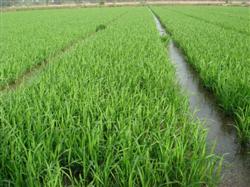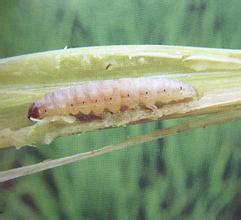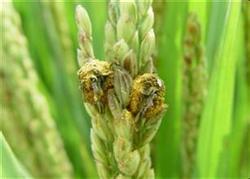Fertilizer requirement characteristics and fertilization principles of Rice

Crop production is affected by many factors, and fertilization conditions are ever-changing. If we understand the fertilizer requirements and principles of crops, we can adjust measures to local conditions. It is suggested that fertilization should be framed within a reasonable range. The basic principles, including other agricultural measures, are designed to help farmers broaden their thinking and comprehensively manage crop production when analyzing and solving practical problems. This paper intends to systematically discuss the main crops in China on this topic, and let's talk about rice first. The growth and development of rice can be divided into seedling, tiller, booting, heading, flowering, maturity and other different stages. The characteristics and principles of fertilizer requirement are as follows: there are two nutrient absorption peaks. Rice tillering stage and young panicle differentiation stage are two peaks of nutrient uptake, but single cropping rice is different from double cropping rice. The growth period of single cropping rice is longer, and the two fertilizer absorption peaks are well spaced, which is the key to topdressing. Double cropping rice has a shorter growth period and two fertilizer absorption peaks tend to overlap, so the center of gravity of fertilization is earlier than single cropping rice, but the amount of fertilizer application is relatively less. Sensitive to zinc deficiency, easy to suffer from "seedling shrinking disease". Zinc deficiency soils are mostly calcareous paddy soil, coastal saline paddy soil and low-lying swamp paddy soil, especially winter wheat stubble rice and early rice. Excessive application of phosphate fertilizer will also induce zinc deficiency. Increasing the application of organic fertilizer and reasonable application of phosphorus fertilizer can prevent zinc deficiency, and zinc fertilizer as basic fertilizer soil or foliar spraying can correct zinc deficiency. It's a silicon-loving crop. Rice is the crop that absorbs the most silicon. Silicon can promote the respiration and root growth of rice, improve the efficiency of photosynthesis, strengthen the stem, enhance lodging resistance and disease resistance, especially for high-yield rice. The soil in the root zone has a special redox layer. When rice grows under flooded conditions for a long time, the soil layer is divided into an oxidation layer near the water body (a few millimeters to 1 cm above the tillage layer) and a reduction layer below. The reduction layer is anoxic, if nitrate fertilizer is applied, it will become gaseous nitrogen escape under the action of denitrifying microorganisms in addition to water leakage. Therefore, nitrate nitrogen fertilizer should not be used or used cautiously. Nitrate nitrogen test is not suitable for nutrition diagnosis. Rice grows under flooded conditions, and the absorbed nitrogen is mainly ammonium nitrogen in the body before transformation, so the rapid determination of plant nutrients is mainly by chlorophyll colorimetric method, rather than measuring its nitrate content; under flooded conditions, soil available nitrogen also exists in ammonium nitrogen, and it is not suitable for nutrition diagnosis by nitrate rapid measurement. The availability of soil nutrients in paddy field is different from that in dry field. Under the condition of flooding, the availability of nutrients such as phosphate fertilizer and iron and manganese is higher than that of dry land, and sometimes it is even toxic due to the high content of manganese. Therefore, after the dry field is changed into paddy field, the phosphate fertilizer can be applied less, and the lack of iron and manganese can also be alleviated, while after the paddy field is changed into dry field, it is necessary to increase the amount of phosphorus application and pay attention to the lack of iron, manganese and other elements. There are special requirements for moisture control. Water is an important raw material for material composition and photosynthesis of rice plants. water transpiration can regulate plant temperature, improve growth environment, prevent low temperature freezing injury and inhibit weed growth. The relationship between water status and crop growth is vividly illustrated by "irrigating and elevating children, falling stems and growing roots". It has important guiding significance for rice water management and should be applied flexibly according to specific conditions. The principle of fertilization should improve the technology of fertilization. It is advocated to combine soil preparation, increase the application of organic fertilizer, return straw to the field or plant green manure; control the total amount of nitrogen fertilizer, shift the center of gravity of nitrogen fertilizer back, and appropriately reduce the proportion of nitrogen fertilizer between base fertilizer and tiller fertilizer, so as to reduce ineffective tillering in the early stage and prevent de-fertilization in the later stage; appropriately increase the application of potash fertilizer, advocate the separate application of base fertilizer and topdressing fertilizer, and advocate the fertilization technology of "carrying nitrogen with water" to improve fertilizer and water use efficiency. Comprehensive measures such as rational application of nitrogen, potassium and silicon fertilizer, reasonable close planting and water layer management should be taken to control rice lodging and improve disease resistance, and appropriate amount of lime should be applied in acid soil paddy fields. Scientific control of moisture. The sensitivity and requirement of rice to water are different in different growth stages, so it should be well controlled according to the times. It is necessary to keep the shallow water layer or soil moist at the seedling stage, and to irrigate and protect the seedlings in case of strong wind cooling; stable temperature and humidity conditions are needed during transplanting and returning to green stage, so it is necessary to maintain a certain water layer in order to "level with water" during soil preparation and to support seedlings and slow seedlings after transplanting seedlings; after seedling retardation, with the increase of tillering, it is necessary to drain the field properly to inhibit ineffective tillers and promote root growth. Young panicle differentiation stage and heading and flowering stage are sensitive to water shortage, so rice should be in the alternating state of soil moisture and shallow water layer, and the filling stage requires neither stagnant water nor water cut off prematurely. The method of intermittent and frequent irrigation can be adopted to make the paddy field in the alternating state of waterlogging and falling water. This is not only beneficial to the accumulation of plant nutrients to the grain, but also prevent the premature senescence of leaves and roots, and cut off water 5-10 days before harvest to facilitate the arrangement of stubble and field operation. Strengthen comprehensive management. While fertilizing and irrigating scientifically, we should also do a good job in seed selection, seed drying, seed disinfection and seed germination before sowing. In order to raise cold rice seedlings in greenhouse in Heilongjiang and other places, it is necessary to "refine the seedlings" and cultivate strong seedlings through timely and appropriate opening of the greenhouse and moderate drying of the bed. Before transplanting rice seedlings, it is necessary to combine deep turning with shallow rake to improve the quality of soil preparation and transplant rice seedlings at the right time, and the drop of the field surface is generally no more than 3 cm. Weeding in the field should be carried out, focusing on the control of rice blast, sheath blight, bacterial leaf blight, thrips, rice planthoppers, armyworm and other diseases and insect pests.
- Prev

Several control measures of rice stem borer
Rice stem borer, also known as heart borer, heart borer, is one of the main pests harmful to rice, the larvae have miscellaneous feeding habits, but also harm corn, sorghum and so on. Generally, the yield can be reduced by 5-10%, and the yield can be reduced by more than 30%. It is also an urgent matter for insects to seize grain. Several prevention and control measures are introduced for reference only. 1....
- Next

What are the key points for the prevention and control of rice false smut?
Rice is susceptible to disease at heading and flowering stage, and the pathogen is harmful to some grains on the panicle. At the joint of Yinggu, the yellowish green block was exposed, gradually expanded, and finally wrapped in the whole glume shell, the shape was 4 times larger than that of healthy grain, it was dark green, the surface was smooth, then cracked, and dark green powder was scattered. The weather is closely related to the occurrence of false smut.
Related
- The first cup of black tea in spring, the flavor and history of tea gardens in Kenya, Africa
- The computer can not only choose potatoes, but also grow tea rice. AI will grow winter oolong tea champion.
- It is not only the inflated tea bitten by insects, but also engraved with the four seasons tea in Beipu.
- The Oriental Beauty Tea Festival in Zhuxian County takes the stage at the weekend to experience the plus-size feast of oil tea.
- & quot; Oriental Beauty Tea & Exploration of Emei in Hsinchu, the hometown of quot;
- The new variety of strawberry "Tainong 1" dessert is the first choice with mellow aroma. Crimson gorgeous
- History of Tea in Taiwan: from Wild Inner Mountain to Export Tea Garden
- Two types of Taiwan Oriental Beauty Black Tea won the British three-Star Award for Childhood Tea Xiang Zhang Jiaqi changed from pilot to champion tea maker.
- Banana species and varieties: the planting history of Taiwan Xianren banana and dwarf banana is long, is banana disease resistant?
- Coffee planting Technology: Qianjie Coffee from Seedling to harvesting

